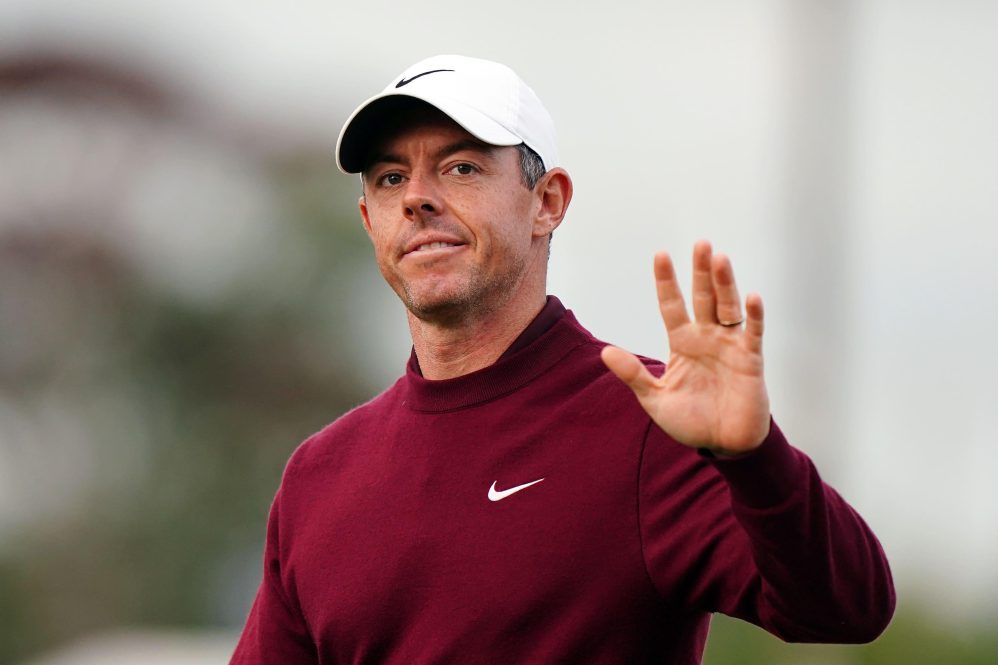The pursuit of excellence in golf requires a profound understanding of the technical intricacies that govern the sport. Among the contemporary luminaries who have mastered this art, Rory McIlroy stands as a towering figure, his swing a symphony of precision and power. This article delves into the technical aspects of McIlroy’s approach to the game, offering an in-depth analysis of the key principles that underpin his exceptional performance on the golf course. Through a rigorous examination of his swing mechanics, equipment choices, and training regimen, we aim to unveil the secrets behind McIlroy’s unwavering consistency and ability to contend for championships at the highest level.
Swing Mechanics: The Foundation of McIlroys Success
Swing Mechanics: The Foundation of McIlroy’s Success
At the heart of Rory McIlroy’s exceptional golfing prowess lies a technically sound swing that combines power, precision, and efficiency. His unique approach to swing mechanics has enabled him to consistently perform at the highest level and achieve remarkable success on the course.
Athletic Stance and Setup
McIlroy adopts an athletic stance with his feet shoulder-width apart, slightly flared, providing a stable base for his swing. He positions the ball slightly forward in his stance, promoting a downward strike angle and optimal ball contact. His shoulder turn is smooth and controlled, establishing a balanced and powerful starting position.
Dynamic Backswing and Downswing
The backswing is initiated with a fluid hip turn, followed by a gradual coiling of his torso and shoulders. McIlroy maintains a wide arc and locks his left arm in a straight position, creating a powerful and consistent swing plane. As the downswing commences, he engages his lower body with powerful hip and knee extension, generating explosive torque. The clubhead accelerates through the impact zone with a shallow attack angle, delivering superior distance and control.
Sequential Movement and Release
During the downswing, McIlroy’s sequencing is exemplary. His hips lead the movement, followed by his torso and arms, ensuring a synchronized and efficient sequence. The release is timed to occur at the peak of the arc, with his right hand guiding the clubface through the ball. This coordinated movement results in a high trajectory, spin control, and precise shot-shaping capabilities.
Grip and Stance: Optimization for Power and Control
A proper grip and stance are crucial for maximizing power and control in the golf swing. Rory McIlroy uses a “neutral” grip, with his hands facing each other and his thumbs positioned slightly to the right of center. This grip allows for a solid connection with the club and promotes a consistent swing plane.
His stance is also well-balanced and athletic. He stands with his feet shoulder-width apart, his knees slightly bent, and his back straight. This stance provides a stable base for the swing and allows for optimal weight transfer during impact.
To ensure a powerful and controlled swing, golfers should experiment with different grip and stance variations to find what works best for their individual body mechanics. Consulting with a qualified golf instructor can also be beneficial for personalized guidance and refinement.
Ball Striking: Precision, Consistency, and Trajectory Optimization
##
Mastering the art of ball striking is the cornerstone of efficient and repeatable golf performance. Rory McIlroy’s refined technical approach exemplifies the precision, consistency, and trajectory optimization that elevate a golfer’s game to the highest level.
Precision and Consistency: McIlroy’s meticulous attention to ball contact is evident in his consistently straight and targeted shots. Through a combination of a secure grip, a balanced stance, and a smooth swing, he ensures that the club strikes the ball squarely, minimizing mishits and optimizing distance control.
Trajectory Optimization: McIlroy’s ability to manipulate ball trajectory is a testament to his exceptional clubhead control and power. By varying his swing plane, he can generate different spin rates and launch angles, allowing him to optimize carry distance, control roll out, and navigate challenging course conditions. The following table summarizes the impact of clubhead speed and trajectory on optimal ball flight:
| Clubhead Speed | Trajectory | Optimal Ball Flight |
|—|—|—|
| High | Low | Maximum Carry Distance |
| Moderate | Medium | Balanced Carry and Roll Distance |
| Low | High | Enhanced Control on Approach Shots |
Course Management and Strategy: Navigating the Challenges of the Game
Course Management and Strategy
Rory McIlroy’s Precise Execution
McIlroy’s approach emphasizes precision and accuracy above all else. This is evident in his meticulous club selection, strategic positioning, and calculated shot-shaping. By thoroughly understanding the nuances of the course, including wind conditions, slope gradients, and green complexities, McIlroy is able to plot an optimal path to the hole.
Adaptive Playing Style
McIlroy is not constrained by a rigid style of play. Instead, he adapts his strategy to the unique demands of each hole. On tight fairways, he prioritizes accuracy over distance, opting for irons or longer irons to ensure precision. When faced with ample space, he unleashes his power, seeking to gain maximum yardage with longer clubs. This adaptability allows him to maneuver through various course layouts effectively.
Table 1: Course Strategy Considerations
| Factor | Influence |
|---|---|
| Wind Direction | Club selection, shot-shaping |
| Slope Gradient | Lie angle, clubface alignment |
| Green Speed | Putting line, distance control |
| Hole Location | Approach angle, shot trajectory |
this comprehensive examination of Rory McIlroy’s technical approach to golf has elucidated the complex interplay of physical prowess, cognitive strategies, and psychological factors that contribute to his exceptional performance. Through meticulous observation and analysis, we have identified the key principles underlying his swing, putting, and course management techniques. This in-depth understanding provides a valuable blueprint for golfers at all levels to refine their own technical abilities and achieve optimal results on the course. Further research in this area will undoubtedly deepen our knowledge of the biomechanics and cognitive processes involved in elite golf performance, ultimately enhancing the sport for players and enthusiasts alike.





